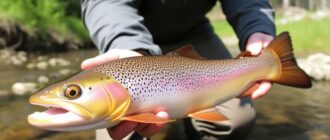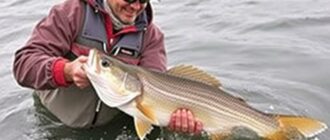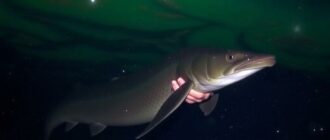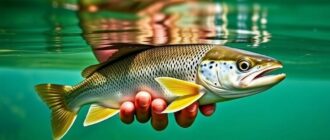Welcome! If you have ever stood on a riverbank, rod in hand, staring at a tackle box like it’s a treasure chest full of puzzles, you aren’t alone. Choosing the right bait can feel like a secret language of the lake, a mix of science, tradition, and gut feeling. In this long, practical, and friendly guide, we’ll explore “Angelköder im Vergleich: Wann nimmt man welchen Köder?” — translated and expanded for English-speaking anglers who want to learn when to use which bait. Whether you fish for trout in bubbling streams, carp in still waters, bass in lily pads, or pike lurking in weeds, this guide will walk you through the who, what, when and why of bait selection.
Why Bait Choice Matters: The Short Story
Every angler has had that magical moment: a strike, a fight, and the swell of joy when you land a fish you’ve been waiting for. Often, that magic begins with the bait. Bait choice changes how fish perceive your offering, influences bite frequency, affects hookup rates, and even determines the size and species of fish you attract.
Think of bait selection like choosing a menu at a restaurant. If you’re in the mood for spicy food you won’t order a dessert. Fish also have preferences that change with the “menu” offered by temperature, light, water clarity, available natural food, and their energy needs. This guide will help you decode that menu and choose wisely.
How to Read This Guide
We’ll begin with basic bait categories and what they do best. Then we’ll walk through fish species preferences, environmental factors, seasons, techniques, and practical examples. Tables and lists are included so you can glance quickly for answers. By the end you’ll be better equipped to answer the question: “Wann nimmt man welchen Köder?” — when to take which bait.
Basic Categories of Fishing Bait
Let’s start by dividing baits into broad categories. Each category has its strengths and weaknesses and is suited for different situations.
1. Live Natural Baits
Live baits are exactly what they sound like: worms, minnows, maggots, shrimp, and insects in their living form. They are powerful because they offer natural movement, scent, and familiar shape. Many predators are tuned to detect movement and the chemical cues released by living prey.
Pros include high attractiveness and realistic behavior. Cons are that they can be fragile, require care, and sometimes are illegal or impractical in certain waters.
2. Dead Natural Baits
Dead baits include cut fish, strips, prepared baits like fishmeal paste, and preserved items. They’re often used for larger predators and bottom-feeders that detect scent and taste more than movement.
Pros: easier to transport and store than live bait; can be very effective for species like catfish and carp. Cons: less movement, can be less attractive to visually hunting species.
3. Prepared and Dough Baits
Prepared baits include boilies, cereal mixes, pellets, and paste — popular in carp fishing but useful for many species. These are designed for slow release of scent and flavor. Boilies, for example, can be sculpted onto hair rigs and are formulated to attract specific fish.
Pros: customizable, long-lasting, and often legal where live bait is restricted. Cons: may require baiting-in (feeding an area) to be effective.
4. Artificial Lures
Artificial lures are man-made imitations: spinners, spoons, crankbaits, soft plastics, jigs, flies — crafted to mimic or provoke natural prey. They are designed to move in certain ways, produce flash, vibration, or noise, and trigger predatory instincts.
Pros: reusable, durable, and versatile; allow casting long distances and covering water quickly. Cons: require technique and sometimes finesse to be effective; may be less aroma-rich than natural bait.
5. Flies and Fly Patterns
Flies are specialized artificial baits used in fly fishing. They mimic insects, small fish, or other food sources. The presentation and stealth are critical, and fly fishing can be a precise art.
Pros: incredibly lifelike when presented properly; suited for sight-feeding fish. Cons: gear and technique learning curve; limited casting distance compared to conventional tackle.
How Fish Detect Bait: The Senses at Work
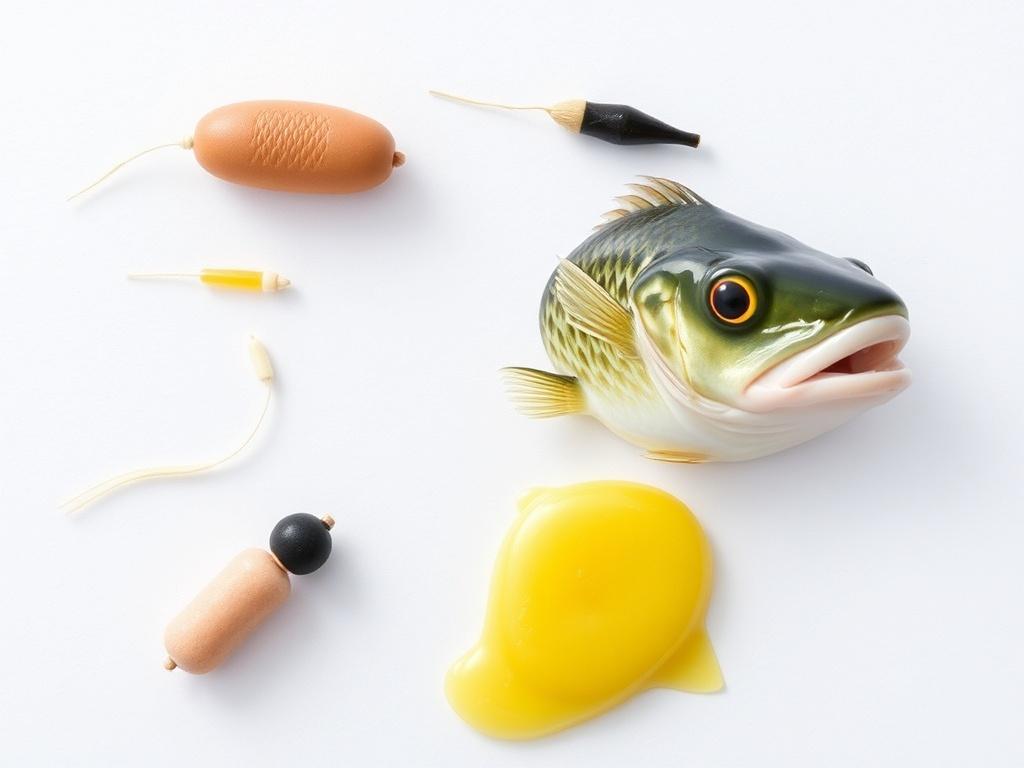
To understand bait selection, you must understand how fish sense their world. They use sight, smell (olfaction), lateral line detection (vibration and movement), and taste. Different species rely more heavily on different senses. For example:
- Trout use sight heavily — clear water and good light favor visual baits and accurate presentation.
- Carp and catfish rely more on smell and taste — scent-laden baits and strong flavors work well.
- Piscivorous predators like pike and bass use a mix: sight for quick strikes, but also vibration and silhouette.
Knowing which sense a target species prioritizes helps choose whether to use a flashy spinner or a scented pellet.
Environmental Factors That Influence Bait Choice
Water conditions, weather, season, and fish behavior all play a role. Let’s examine major factors and how they change bait choice.
Water Clarity and Light
Clear water and bright light demand subtle, realistic baits and careful presentation. In murky or stained water, strong scents, large profiles, colorful lures, or vibration-producing lures may be more effective.
Examples:
- Clear mountain stream: small natural flies, nymphs, or small soft plastics that match local insects.
- Stained river after rain: bright spinnerbaits, large soft plastics, or scented baits.
Water Temperature and Seasonal Behavior
Fish metabolism changes with temperature. Cold water slows down fish; they become less aggressive and prefer easy energy food, often near the bottom or in slow water. Warm water activates fish; they feed more aggressively and are willing to chase faster-moving baits.
Seasonal examples:
- Spring: fish move to feed actively after winter — try medium-action lures and a mix of live baits and artificial presentations.
- Summer: early morning and evening are best; topwater lures and aggressive soft plastics work well. During hot midsummer, fish may seek cover and deeper water, favoring slow-moving baits.
- Autumn: fish feed heavily to prepare for winter — large, tasty baits can provoke big bites.
- Winter: slow, subtle presentations; small jigs, live worms, and teasers can produce results.
Current and Water Movement
Fast current requires heavier weights and baits that cling or present well in flow. In slow water, small, subtle baits with minimal weight present naturally and are often more effective.
Examples:
- Rivers with strong current: use heavier rigs, larger baits, and braided line to feel bites and prevent drag.
- Still waters: use floats, hair rigs, or light jigs to present bait naturally.
Matching Bait to Species: A Practical Breakdown
Here we’ll look at common species and the typical baits that catch them. Keep in mind local conditions can change the rules, but these are reliable starting points.
Carp
Carp are omnivores with a keen nose and a love for carbs and proteins. They feed heavily on the bottom and use their barbels to taste and sift through substrate.
- Best baits: boilies, pellets, maize (corn), bread, paste, worms, maggots.
- Techniques: bottom rigs, hair rigs, feeder rigs, and spodding to bait in an area.
- Tips: use smell and flavor attractors, and be aware that carp can be picky — sometimes smaller amounts of high-quality bait work better than overfeeding.
Trout
Trout are visual feeders, often selective and influenced by insect hatches and water clarity.
- Best baits: flies (dry, nymphs), small spinners, small soft plastics, live trout bait (in some fisheries), worms.
- Techniques: fly fishing, light spinning, fine presentation with stealth.
- Tips: match the hatch — imitating local insect life is a key skill in trout fishing.
Bass (Largemouth and Smallmouth)
Bass are aggressive predators with a strong response to movement and vibration.
- Best baits: soft plastic worms, crankbaits, spinnerbaits, topwater lures, jigs, live shiners.
- Techniques: varied — from flipping into cover for largemouth to finesse or jerkbait presentations for smallmouth.
- Tips: change retrieve speed and bait size until you find what triggers reaction strikes.
Pike and Musky (Esox species)
Large predators that respond to large profiles, flash, and commotion.
- Best baits: large soft plastics, swimbaits, spoons, large lures, dead baits like smelt or big minnows.
- Techniques: strip or steady retrieves, trolling, dead-bait rigs for big specimens.
- Tips: strong tackle and wire traces often necessary to avoid bite-offs.
Catfish
Catfish are bottom-feeders with an extraordinary sense of smell. They are attracted to strong-smelling, oily baits.
- Best baits: cut fish, salted baits, chicken liver, stinkbaits, prepared pastes, worms.
- Techniques: ledger rigs, fixed rigs, large hooks and heavy line for big fish.
- Tips: scent and persistence pays; long wait times and chumming can be effective.
Walleye
Walleye feed often at dawn and dusk and can be sensitive to bright light. They respond to moderate action and scent-laced baits.
- Best baits: jigging minnows, soft plastics, live bait rigs, crankbaits in deep structure.
- Techniques: slow presentations and subtle jigs, especially along drop-offs and structure.
- Tips: night fishing and low-light periods can be highly productive.
Practical Table: Bait Comparison at a Glance
This table summarizes advantages, disadvantages, best uses, and typical target species for common bait types.
| Bait Type | Pros | Cons | Best For | Typical Conditions |
|---|---|---|---|---|
| Live Worms | Highly attractive, natural movement | Fragile, need storage | Trout, panfish, bass, carp | Clear to stained water, versatile |
| Maggots & Larvae | Great for short strikes, cheap | Small target, less useful for big pred. | Panfish, trout, chub | Stillwater margins, feeder fishing |
| Minows & Live Baitfish | Excellent for big predators | Can be difficult to keep alive | Bass, pike, walleye, catfish | Structure, drop-offs, ambush areas |
| Boilies & Pellets | Long-lasting, customizable | Need baiting-in for carp | Carp, tench | Stillwater, targeted carp swims |
| Soft Plastics | Versatile, reusable, many profiles | No scent unless enhanced | Bass, perch | Cover, weedlines, summer low-light |
| Spoons & Spinners | Flash and vibration; casts far | Less realistic profile | Pike, trout, bass | Open water, moving fish |
| Flies (Dry & Nymphs) | Highly realistic, subtle | Requires presentation skill | Trout, grayling, panfish | Clear streams, rivers, selective fish |
| Cut Bait & Prepared Paste | Strong scent, attracts distant feeders | Messy, may attract unwanted species | Catfish, carp | Deep water, night fishing |
How to Choose Bait Step-by-Step: A Decision Flow
When you arrive at a fishing spot, you often have limited time and must make quick bait choices. Here is a simple step-by-step decision flow to help you decide.
- Identify the target species or decide if you want to fish for any species.
- Observe water conditions: clarity, temperature, current, cover, depth.
- Consider time of day and season.
- Choose a category of bait (live, prepared, artificial) that matches the species and conditions.
- Select size, color, scent, and presentation based on fish behavior and water conditions.
- Start with one approach and be ready to change color, size or bait if bites don’t come within a reasonable time.
This simple flow gets quicker with experience. The more often you fish a spot, the better you’ll read what works.
Quick Heuristics to Remember
- Fish are more likely to hit bigger baits in autumn and spring when feeding aggressively.
- In cold water, slow down—use smaller, subtle baits and slow retrieves.
- In muddy water, increase scent and vibration—larger profiles and noisy lures help.
- Clear water means realistic presentation and stealth matter more than flash.
Artificial Lures: Which Type, When?
Artificial lures are vast in variety. Here we’ll group them by behavior and explain when to use each.
Spoons
Spoons produce flash and wobble — they imitate injured baitfish. Use spoons in open water where flash can be seen from a distance.
Best when: fish are feeding on baitfish, during mid-day in clear water or when fish are slightly dispersed.
Spinners and Spinnerbaits
These create vibration and flash simultaneously. Spinners are great for trout and active bass, while spinnerbaits are excellent for murky water and heavy cover.
Best when: fishing structure, around weeds, or in stained water.
Crankbaits
Crankbaits dive to specific depths and imitate small fish. They’re excellent for covering water and triggering reaction strikes.
Best when: scanning structure, deep flats, and drop-offs.
Soft Plastics
Soft plastics simulate a wide range of prey: worms, crawfish, baitfish. Rigged on jigheads, Texas rigs, or Carolina rigs, they’re versatile and deadly for bass.
Best when: fishing close to cover or when fish are reacting to lifelike shapes slowly presented.
Topwater Lures
Topwater lures create surface commotion: popping, walking, and splashing. They are thrilling for anglers because strikes are visible and explosive.
Best when: low-light conditions or calm surface with active feeding fish.
Jigs
Jigs are workhorses: they present various trailers to mimic craws or minnows. They’re go-to for both deep and shallow presentations and good for winter fishing with slow lifts.
Best when: vertical jigging over structure or slow presentations near bottom.
Natural Baits: Practical Tips and Tricks
Natural baits can be simple or specialized. Here are practical tips for some common options.
Worms
Worms are universal. Thread them properly so they stay on the hook and wiggle naturally. For trout, small pieces worked under a float are deadly. For carp, heavy bottom rigs with large worm portions can work but carp may taste-test and spit, so ensure a secure hair or hook presentation.
Maggots and Casters
Great for feeder and float fishing, maggots are active and draw strikes. Casters (pupa stage) are larger and more robust. Use them in bunches on small hooks for panfish or single casters for trout.
Live Baitfish
Keep minnows lively in oxygenated bait buckets. Hook them through the back or lips to allow natural movement but avoid harming them excessively. For predators, present them on light leaders to maintain natural action, using floats or free-line rigs as needed.
Shrimp and Crayfish
Excellent for species like trout, carp, and bass in certain regions. For carp, paste made from shrimp is an intense attractor. For predatory fish, crayfish tied or rigged on the bottom can be irresistible.
Role of Scent and Flavor Additives
Scent matters for many species. Commercial attractors, flavored oils, and dip-ons can increase attractiveness of soft plastics and prepared baits. When to use them?
- Use scent in murky water or when fishing species that rely on smell (carp, catfish).
- Use flavor on soft plastics for bass fishing during pressured times when bass test lures with their mouths.
- Avoid over-scenting flies for trout in clear water — subtlety wins.
Tip: combine scent with a visual lure for a two-pronged attack — fish see it, smell it, and strike.
Presentation Matters: Beyond the Bait
Even the best bait can fail without correct presentation. Here are key presentation tips:
- Match the action: If fish are sluggish, use slow, subtle movements. If they’re active, faster retrieves or aggressive twitches may provoke strikes.
- Match the depth: Fish often hold at specific depths. Use weighted rigs or lures that run at the desired depth.
- Match the size: Larger prey is not always better. Sometimes undersized baits trigger more confident, aggressive strikes — especially for picky species.
- Match the silhouette: Shape and profile matter. In clear water, lifelike silhouettes are more important than bright colors.
Using Charts and Data to Improve Your Choices
Keeping a log of catches, conditions, bait, and time is one of the fastest ways to learn what works. A simple chart can reveal patterns more quickly than memory alone.
Sample Fishing Log Table
| Date | Location | Target Species | Bait/Lure | Water Temp | Weather | Catch | Notes |
|---|---|---|---|---|---|---|---|
| 2025-04-10 | River Bend | Trout | Dry fly – size 16 | 10°C | Overcast, light rain | 3 trout (12-18cm) | Hatch of mayfly, match the hatch worked |
| 2025-07-22 | Lake South | Bass | Soft plastic worm (5″) | 23°C | Sunny, calm | 4 bass (30-45cm) | Slow Texas rig near weed edge |
Logging details like these helps identify what bait works under which conditions, and it builds your personal repository of successful strategies.
Case Studies: Real-World Examples
Here are a few real-world scenarios to illustrate how the theory plays out in practice.
Case Study 1: The Fussy River Trout
Situation: Clear, cold river with selective trout refusing standard lures. Action: Switch to small nymph patterns that mimic the dominant insect species observed on the water. Use a long leader, light tippet, and present the fly with minimal drag. Result: Fussy trout eat the nymph due to matching the hatch and subtle presentation.
Case Study 2: Carp in a Heavily Fished Lake
Situation: Pressure-wary carp in a stocked lake where regular corn and boilies have been overused. Action: Use small, intensely flavored boilies, feed lightly to create interest, and change hookbait to something more natural like a worm or a small pellet. Result: Carp take the subtler, different-tasting bait after testing other offerings.
Case Study 3: Summer Bass Bust-Off
Situation: Hot midsummer; bass suspended in deeper thermoclines near structure. Action: Switch to deep-diving crankbaits and heavier jigs to reach deeper water. Fish early morning with topwater lures around the edges of the structure. Result: Bass respond to deeper baits during the day and surface lures at low light.
Troubleshooting: What to Do When the Fish Don’t Bite
Blank days are part of fishing. Here are steps to troubleshoot.
- Change your bait category: Try live bait if you’ve been casting lures; try a lure if you’ve been using bait.
- Change size and color: Smaller or larger, brighter or more natural — try variations until you find a pattern.
- Change depth: Move up or down the water column; fish may be holding at a different depth than you expect.
- Change location: Move to structure, drop-offs, shaded areas, or points of current convergence.
- Observe feeding activity: Look for surface feeding, birds diving, or insect hatches to indicate baitfish or insect action.
Legal and Ethical Considerations
Always check local regulations before using certain baits. Some waterways restrict live baitfish to prevent invasive species introduction. Likewise, protected areas may ban certain types of bait or limit harvest. Ethical considerations include humane handling of live bait and minimizing environmental impact (no littering, proper disposal of unused bait).
Best Practices
- Use local bait where allowed to avoid introducing non-native species.
- Handle fish and bait humanely. Keep fish wet and minimize air exposure when practicing catch-and-release.
- Follow seasonal and bag limits to preserve fish stocks.
Advanced Tips: Tricks of the Experienced Angler
Seasoned anglers use advanced tweaks to gain an edge. These are not necessary for beginners, but powerful when applied correctly.
Layered Attraction
Combine visual appeal, scent, and vibration. For example, use a soft plastic trailer with scent and a vibrating jig head to create a multi-sensory lure that appeals to sight, smell, and lateral line detection.
Micro-Adjustments
A small change in hook size, color, or leader length can make the difference in finicky conditions. Keep a variety of small changes at hand rather than overhauling your entire setup.
Pre-Baiting and Chumming
For species like carp and catfish, setting up a feeding area (pre-baiting) can concentrate fish and produce longer-term bites. Use caution to avoid overfeeding and follow local rules about baiting.
Seasonal Patterning
Recognize seasonal patterns — e.g., spring spawning movements, post-rainfall feeding, or late-summer deep holding. Anticipating these patterns helps you choose the bait before fish are highly active.
Checklist: What to Pack for Bait Flexibility
Here’s a simple checklist to ensure you can change approach on the water without running back to the car.
- Assortment of live baits (if legal): worms, maggots, minnows
- Selection of soft plastics in multiple sizes and colors
- Several jigheads, spinnerbaits, and spoons
- Boilies, pellets, and groundbait for carp
- Fly box with dry flies, nymphs, and emergers
- Small bottle of scent attractor and dip-on additives
- Variety of hooks, leaders, weights, and rigs
- Logbook or phone app to record conditions and results
Common Misconceptions About Bait
Let’s debunk a few myths.
Myth: Bigger Bait Always Equals Bigger Fish
Not always. Bigger bait can attract larger fish, but it can also scare or deter picky feeders. Sometimes a small, subtle bait produces more bites and bigger fish because those fish are willing to eat what smaller fish are eating.
Myth: Color Is Everything
Color helps, but presentation, profile, action, and scent often matter more. In clear water, natural colors outperform bright ones. In stained water, bright or contrast colors help. Balance is key.
Myth: Artificial Lures Are Only for Experts
Artificial lures can be just as easy as bait for many situations. The advantage is reusability and the ability to cover water quickly. Beginners can catch plenty on simple spinners and soft plastics.
Regional Considerations: Local Knowledge Matters
Fishing habits and effective baits vary regionally. Local angling shops, clubs, and fellow anglers are valuable sources of information. Before traveling to a new area, ask about local bait preferences, seasonal tips, and regulations.
Safety and Practical Handling of Baits
Handling baits safely preserves them and protects you.
- Keep worms and maggots cool and moist in breathable containers.
- Use gloves with sticky bait or strong-smelling attractors.
- Dispose of unused bait properly; do not dump live bait into waters unless allowed.
- Be careful with sharp hooks and large, toothy species — use pliers and de-hookers.
FAQ — Quick Answers to Common Questions

Q: When should I use live bait vs. artificial lures?
A: Use live bait when fish are primarily scent-driven or when you need a natural presentation (e.g., fishing for picky trout or big predators early in the season). Use artificial lures to cover water quickly, present a wide range of actions, and for convenience and reusability.
Q: How often should I change bait if nothing bites?
A: Give a new approach at least 15–30 minutes in many situations, unless signs clearly suggest a different depth or area. Active species might respond faster; for slow feeders like carp or catfish, patience and pre-baiting can take longer.
Q: Can scent alone attract fish?
A: Scent can attract fish from a distance, especially in warm or murky water, but scent without proper presentation often won’t trigger a confident strike. Combine scent with appropriate action and profile.
Q: Is matching hatch only for trout?
A: While the term originates from trout and fly fishing, the principle of matching local food types and sizes applies across species. Presenting a bait that mimics the prey items available in the fish’s environment increases success.
Long-Term Skill Building: How to Improve Your Bait Choices
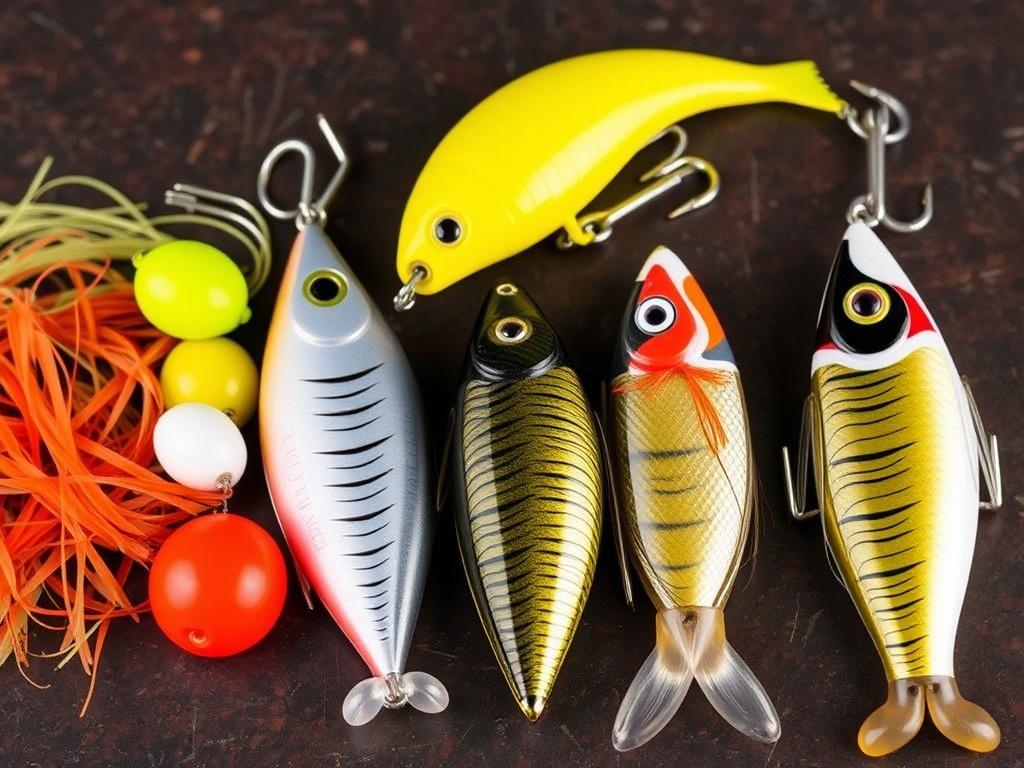
Becoming skilled at bait selection is part experience, part observation, and part experiment. Here are activities that accelerate learning:
- Keep a detailed log of catches, including bait and conditions.
- Study local biology — what insects, baitfish, and forage species inhabit your water.
- Talk to local anglers and join clubs to learn patterns specific to your region.
- Practice different techniques — the more techniques you master, the better you’ll match bait to behavior.
- Experiment in small steps: change one variable at a time (size, color, scent, depth).
Summary: A Simple Rule of Thumb
If you prefer a quick memory aid, here’s a simple rule of thumb:
- Use live or very natural baits and subtle presentation in clear water and for sight-feeding species.
- Use scent, larger profiles, and vibration in murky water and for species that rely on smell and lateral line detection.
- Use slow, heavy presentations in cold water; faster, more aggressive presentations in warm water.
- Be willing to adapt and experiment — the water is telling you what it wants; listen and change accordingly.
Final Thoughts: The Joy of Experimentation
Fishing is equal parts patience and curiosity. Bait selection is a puzzle that rewards those who pay attention, record what works, and remain willing to experiment. Sometimes a successful day is a careful match of species, water conditions, and lure action. Other times, it’s a happy surprise when an unexpected bait triggers a hungry fish. Either way, the process of trying, failing, and refining is what makes fishing so endlessly fascinating.
So next time you ask yourself, “Wann nimmt man welchen Köder?” think of the fish you want, the water you’re on, and the season. Start with a reasoned choice, keep an open mind, and don’t be afraid to adjust your approach. Tight lines and happy fishing!
Extra Resources and Reading
If you want to dive deeper, here are suggestions for further study:
- Local fishery management websites for regulations and species info
- Field guides on aquatic insects and baitfish in your region
- Books on fly tying, lure building, and carp bait recipes
- Forums and local angling clubs for up-to-date tips
Appendix: Quick Reference Tables
Two compact tables to keep in your phone or tackle box as cheat sheets.
Table: Bait by Condition
| Condition | Top Choice | Backup | Technique |
|---|---|---|---|
| Clear, cool water | Small flies, natural-colored soft plastics | Worms, small spinners | Stealth presentation, light leaders |
| Stained or muddy | Bright spinners, scented baits | Large soft plastics, spinnerbaits | Use vibration and scent, larger profiles |
| Fast current | Weighted rigs, live baitfish, heavy spinners | Feeder rigs with pellets | Secure presentation, heavier sinkers |
| Hot summer | Topwater early/late, deep jigs midday | Soft plastics near cover | Fish early or late, search deeper at noon |
| Cold winter | Small jigs, live worms, slow presentations | Tiny spoons, small soft plastics | Slow retrieval, subtle lifts |
Table: Quick Match — Bait to Species
| Species | Best Bait | Action |
|---|---|---|
| Trout | Flies, small spinners, worms | Subtle, precise presentations |
| Carp | Boilies, pellets, maize | Bottom feeding, scent-based |
| Bass | Soft plastics, crankbaits, topwater | Active, variable retrieves |
| Pike | Large spoons, deadbaits, big softbaits | Aggressive, explosive strikes |
| Catfish | Cut bait, stinkbaits, liver | Slow, scent-driven feeding |
| Walleye | Jigs with livebait, deep crankbaits | Subtle, depth-oriented |
Closing Invitation
I hope this guide has given you clear, practical, and inspiring ways to think about bait: what each type offers and how to choose depending on species, season, and conditions. Fishing is a lifelong learning journey — every trip teaches something new. If you want, tell me where you fish and what species you target, and I’ll suggest a customized bait plan for your next outing. Tight lines!

